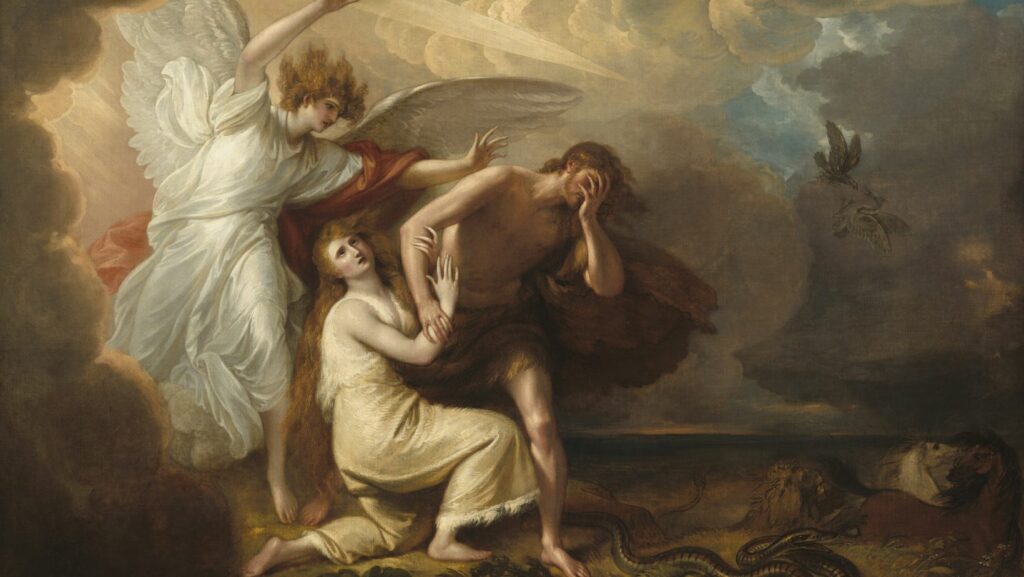When it comes to the age-old question of which rib Adam gave to Eve, there is no definitive answer in the Bible. The story of Adam and Eve’s creation is found in Genesis, where it states that God took one of Adam’s ribs and fashioned it into a woman. However, the specific rib mentioned is not specified as either left or right.
Table of Contents
ToggleThis ambiguity has led to various interpretations and theories throughout history. Some believe that since the heart is traditionally associated with the left side of the body, it would make sense for God to have taken a rib from that side. Others argue that since most people are right-handed, it would be logical for God to create Eve from a rib on Adam’s non-dominant side.
Ultimately, without clear scriptural evidence, we can only speculate about which rib was used. It remains a fascinating topic of discussion and debate among theologians and scholars alike. The Significance of the Rib in Adam and Eve’s Story
Which Rib Did Adam Give to Eve Left or Right
In the biblical account of Adam and Eve, the story tells us that God created Adam as the first man. However, God saw that it was not good for Adam to be alone, so he caused a deep sleep to fall upon him. While Adam was asleep, God took one of his ribs and fashioned it into a woman named Eve. This act of taking a rib holds significant symbolism and raises intriguing questions about its meaning.
Interpretations of the Rib in the Creation Story
Throughout history, various interpretations have emerged regarding the significance of the rib in the creation story. One interpretation suggests that taking a rib from Adam’s side symbolizes equality between man and woman. This view emphasizes that both genders are equal partners in their journey on Earth.
Another perspective views the rib as representing companionship and partnership between man and woman. It signifies that they were meant to support each other emotionally, spiritually, and physically. This interpretation highlights the importance of unity and mutual dependence within a relationship.
Exploring the Symbolism behind Adam’s Rib
Delving deeper into symbolism, some scholars suggest that by using a rib to create Eve, God intended to emphasize their close connection—almost like two parts forming a whole. The rib can be seen as a metaphorical representation of human vulnerability since it protects vital organs such as the heart or lungs. This symbolism underscores how men and women are intertwined in their existence.
Furthermore, some religious interpretations associate this act with sacrifice—a foreshadowing of Christ sacrificing himself for humanity’s redemption centuries later. In this context, Adam giving his rib is seen as an early indication of selflessness and love prevailing over personal gain.

Understanding the Creation of Eve
The Importance of Adam and Eve in Creation
The story of Adam and Eve holds significant importance in various religious and cultural beliefs. According to the Abrahamic religions, particularly Christianity, Judaism, and Islam, Adam and Eve were the first human beings created by God. They are considered the progenitors of humanity and played a crucial role in shaping the course of human history.
Adam is believed to have been created from dust by God’s divine breath, while Eve was crafted from one of Adam’s ribs. This symbolic act signifies their unity as well as their complementary nature. Together, they represent the essence of companionship, love, and partnership.
Different Perspectives on the Rib Given to Eve
Throughout history, scholars and theologians have pondered over various interpretations regarding which rib Adam gave to Eve. While some argue that it was his right rib based on biblical translations or artistic depictions, others believe it might not be a literal translation but rather an allegorical representation.
In conclusion, the story of Adam giving a rib to create Eve continues to captivate our imaginations and spark intellectual discussions. Whether one believes it is a literal event or a symbolic tale is a matter of personal faith or interpretation. Regardless, exploring these ancient narratives allows us to delve into our shared human history and ponder timeless questions about our origins and identities.











